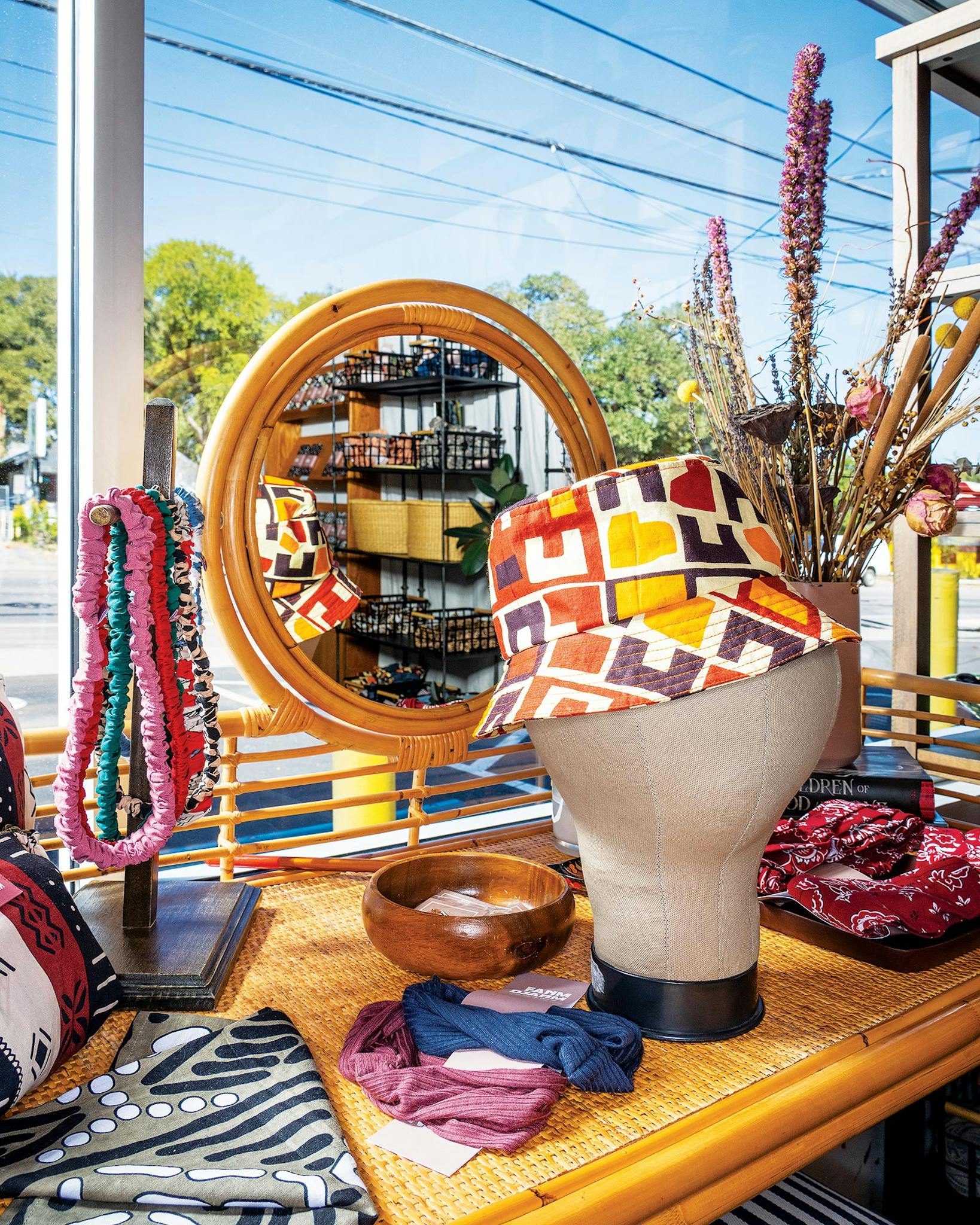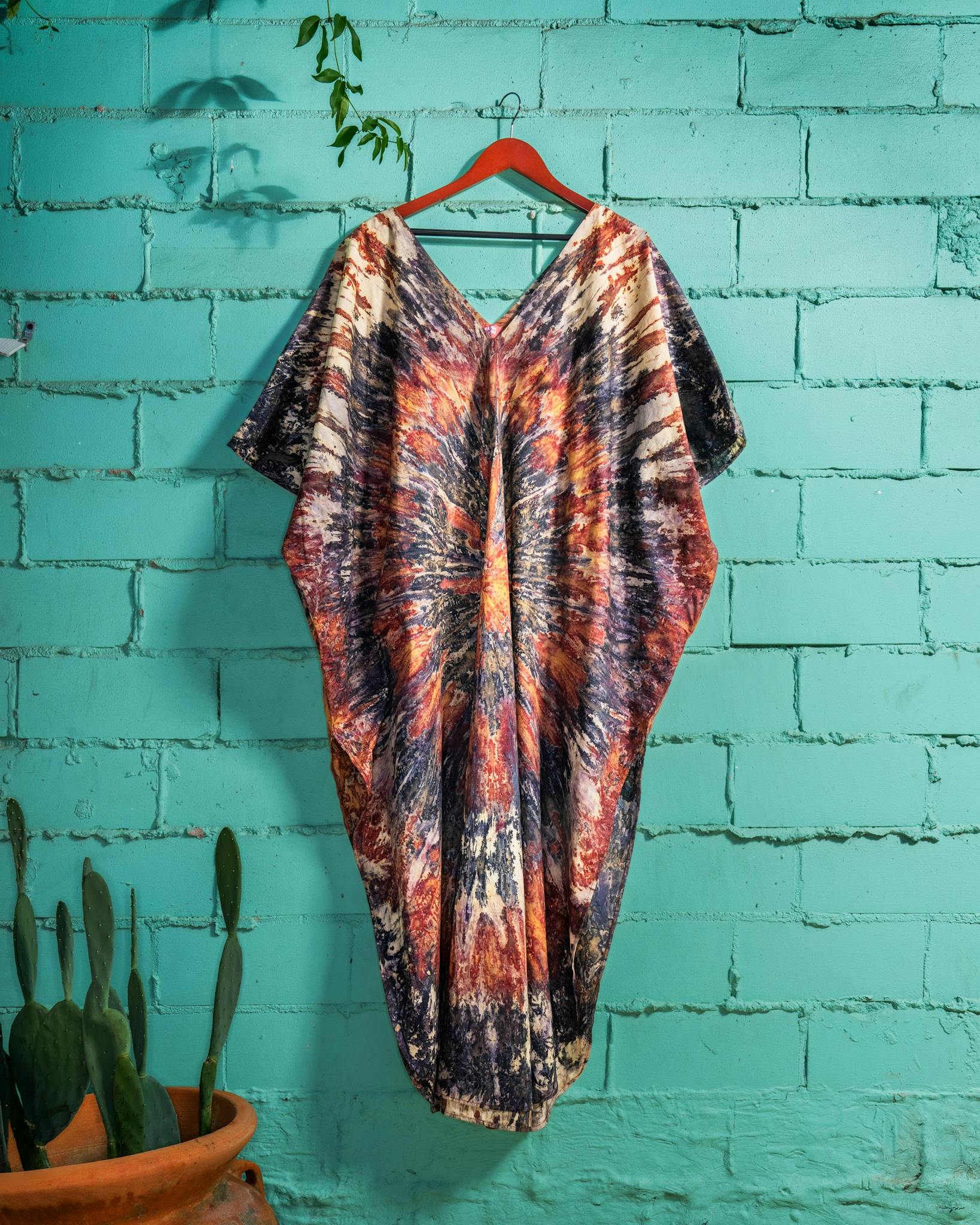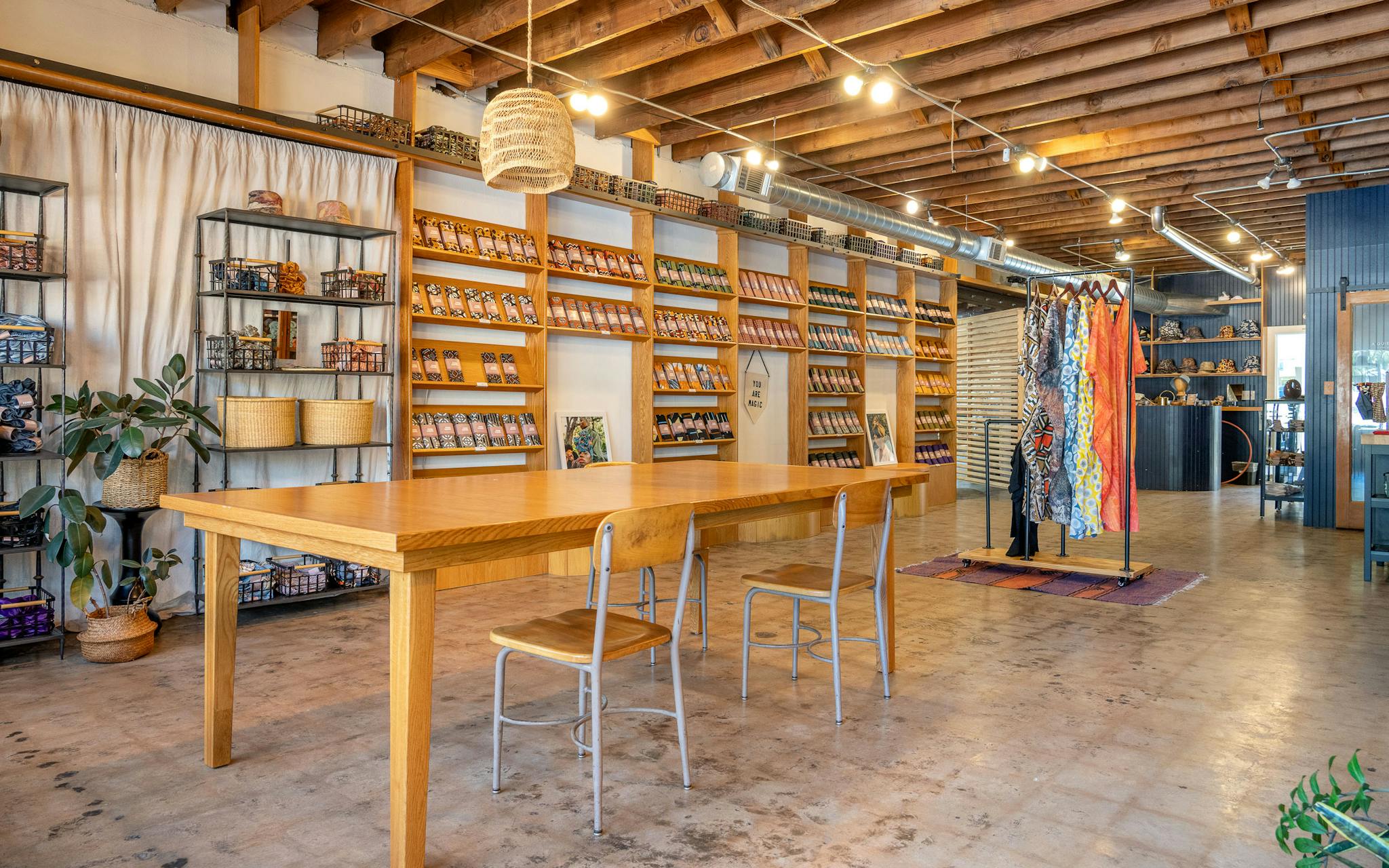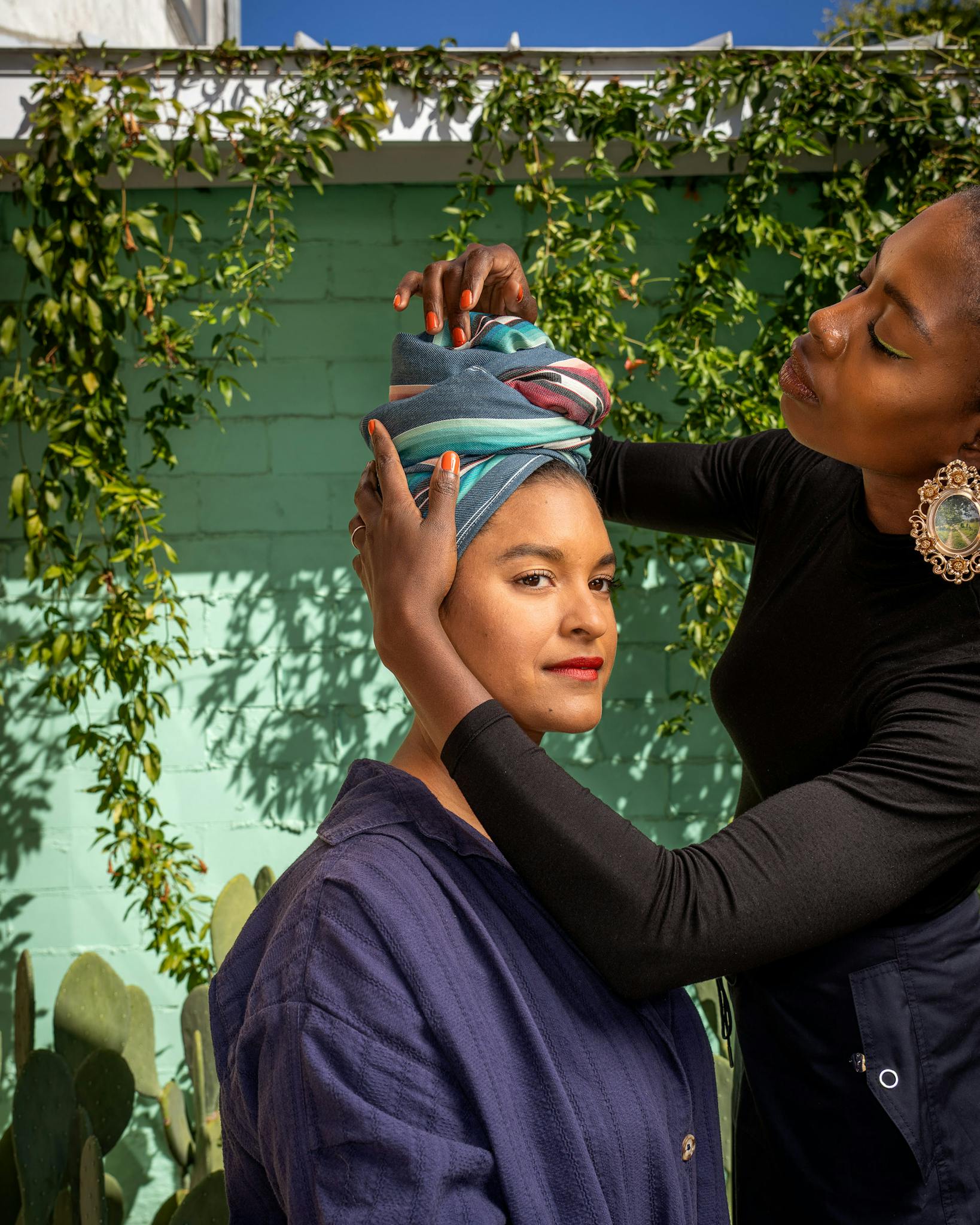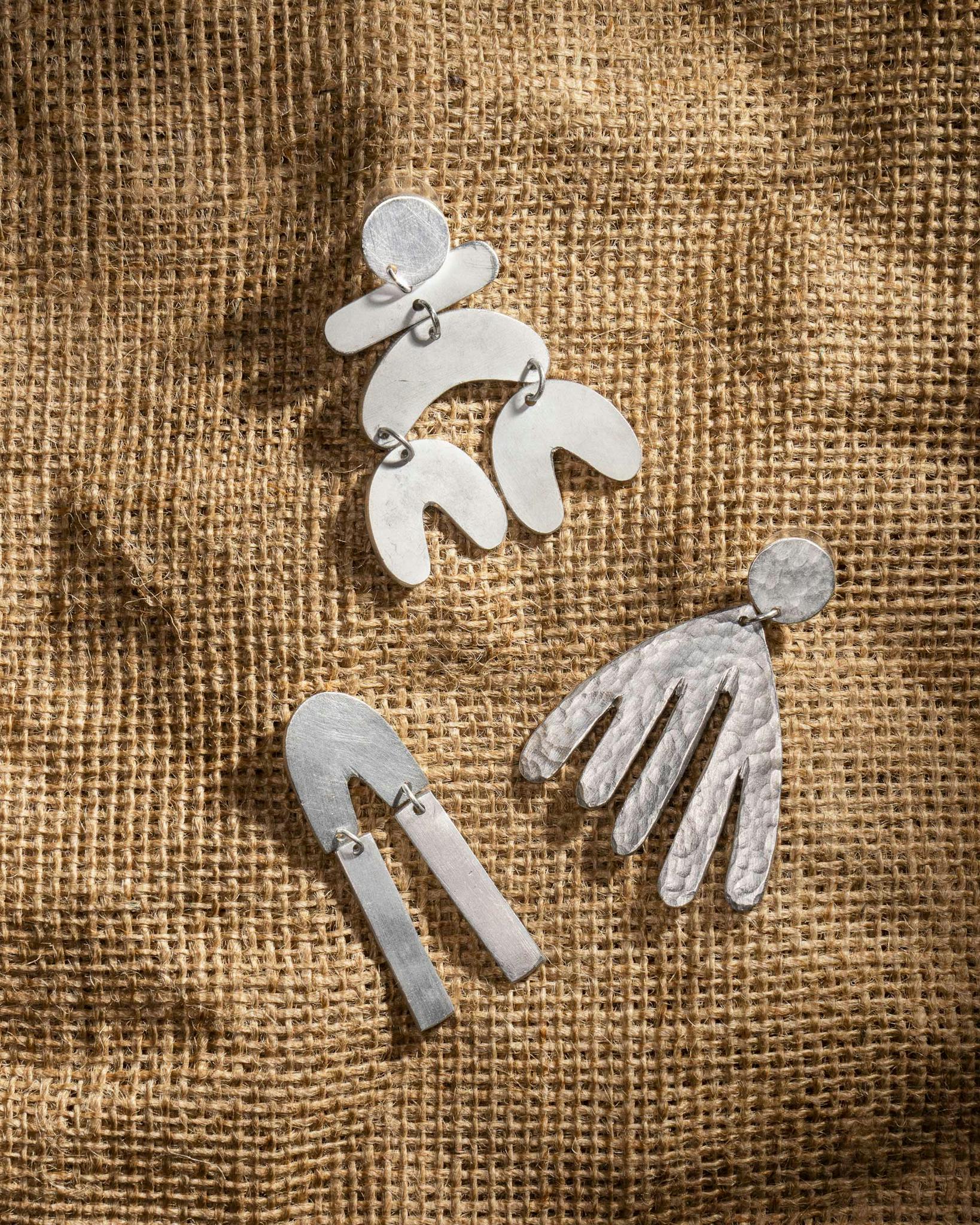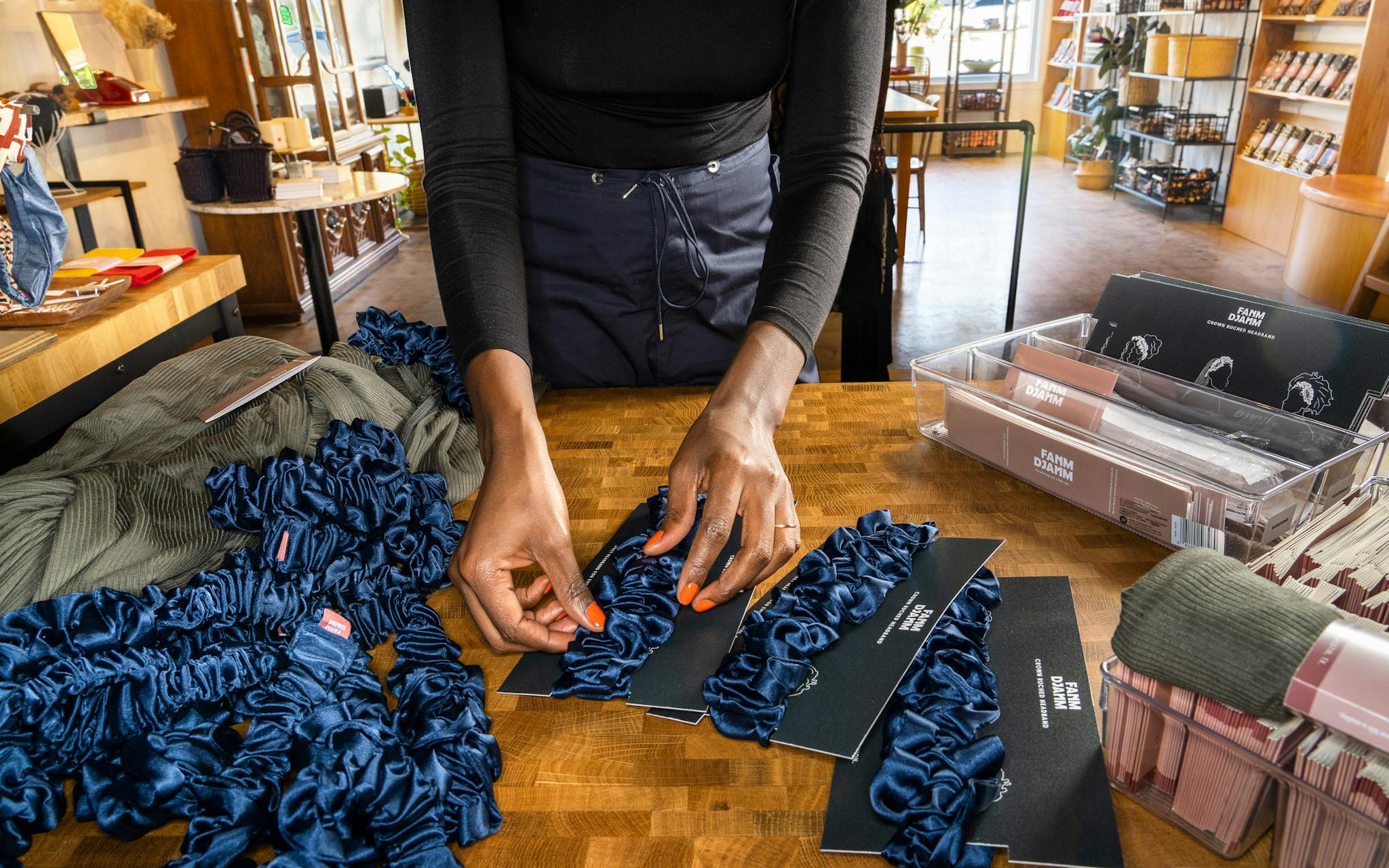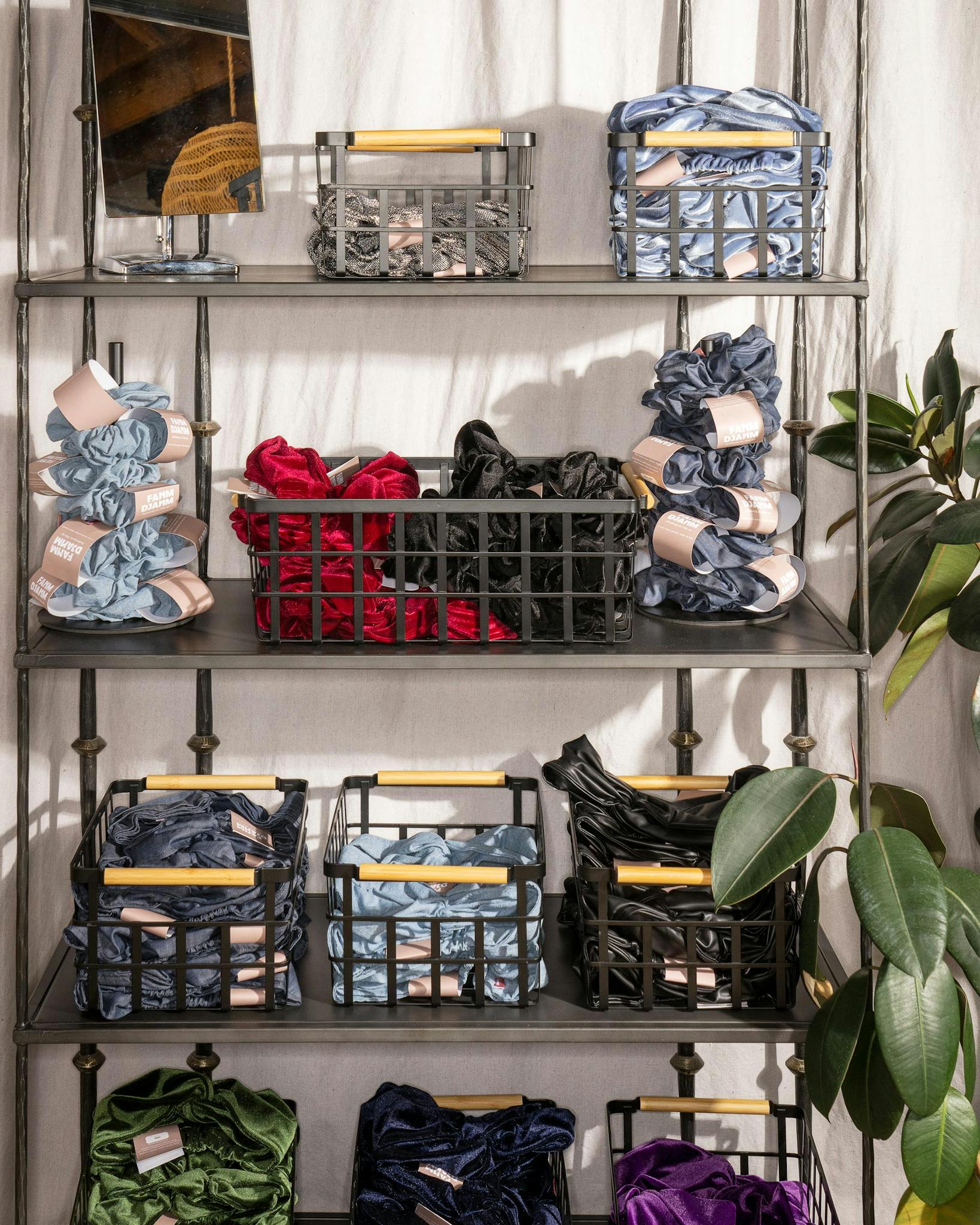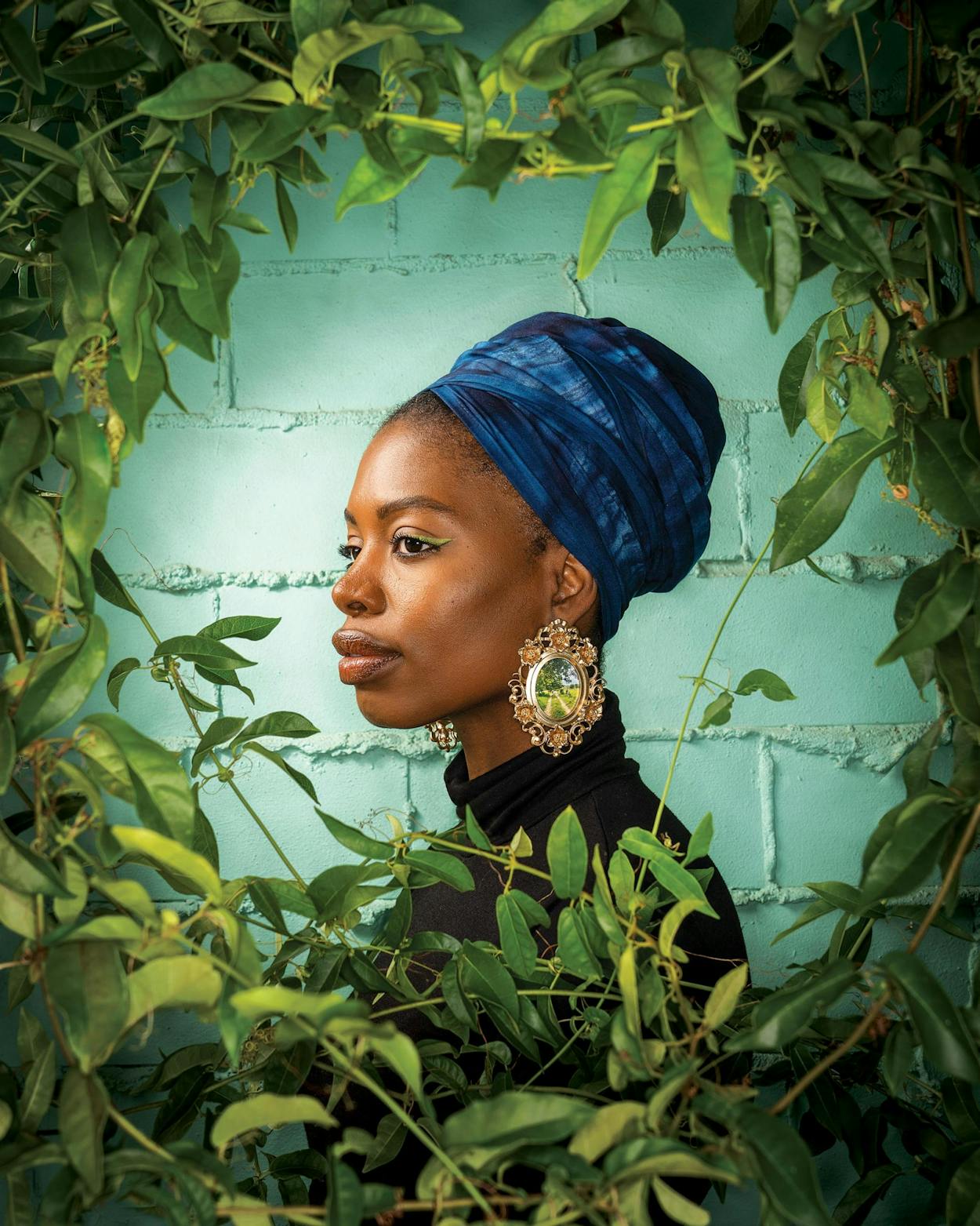When Haitian-born Paola Mathé was working at hotels and restaurants in New York in her twenties, she would often attract attention for wrapping her hair in colorful fabrics, as typically done by older Black women. Inspired to make head wraps more accessible to a younger crowd, she launched Fanm Djanm (Haitian Creole for “strong woman”) in 2014 with a collection of eight styles. Since moving her line to Austin, in 2020, Mathé has expanded it to include dozens of locally made head wraps, bucket hats, and caftans, which she sells online as well as at her appointment-only storefront and studio on South Lamar Boulevard. Her goal is to broaden the perception of what’s considered fashionable. “You always hear things like ‘Parisian chic,’ ” she says, “but I don’t think anything is more chic than an African auntie.”
Texas Monthly: What led you to create Fanm Djanm?
Paola Mathé: I was wearing head wraps a lot in Harlem. All the aunties were wearing head wraps, but not a lot of twenty-two- or twenty-three-year-olds were wearing them. I used to get a lot of attention. Some of it was positive; some of it was people making fun of me. But I never was offended by those comments, because I’ve always loved that look. This woman stopped me on the street and said, “Hey sis, where’d you get your head wrap?” And at that time, my hair was wrapped in like a yard of fabric that I found—maybe less than a yard, it was just a scrap. I said, “Well, go to this African shop and just buy some fabric.” She said “Okay” and then walked away because I wasn’t being helpful. And that was the main thing that had me thinking, “What if I actually started something where I could sell head wraps to women, where they didn’t feel like they had to go dig [for fabric]?”
TM: How did you make those first head wraps?
PM: I went to a few tailors based in Harlem, and I told them my idea. I said, “I want to make head wraps. Can you help me make forty with this fabric?” And they said, “Why?” I’m not joking—a few of them just flat out ignored me. I finally found this one guy in a booth. I am so grateful for our first customers. I would say the first one or so head wraps I sold all had a line right down the middle because I just didn’t know. I was just passionate. But the tailors weren’t listening to me when I was telling them, “I need this to be straight; I need this to be neat.” They were like, “You’re just going to get what you’re gonna get.” So that’s how it happened. Someone listened to me, and then another person listened to me. And then we worked something out until I outgrew them. And then we started producing things in-house. And now we’ve moved [Fanm Djanm] here [to Austin], and we’re working with people with their own workshops who’ve worked with some of these big factories and who have been in the industry for decades.
TM: What’s your process for figuring out which fabrics you want for which products with the local tailors you work with now?
PM: We meet with them weekly. Honestly, it’s a gut feeling. If I see a print and I think it’s going to sell out immediately, I’m going to get as much of it as possible. Honestly, a lot of Fanm Djanm is very selfish. I buy things that I really love. But so often the main product is the head wrap, but let’s say we couldn’t use ten yards of this [fabric] because it was damaged, because the ink bled or there were holes in there or whatever. Then we’re like, “Let’s make bandannas with them and see how that goes.”
TM: So your bandannas and headbands are a product of your efforts to be zero waste after making head wraps. How did you decide to expand with other items, such as your newer bucket hats and caftans?
PM: The bucket hats are also zero waste. [With our caftans], this is a beginning to create stuff that I felt like really spoke to us as the brand. When I think about our clothing, although I love a great statement piece, I want to create pieces that people live in. I always say they’re clothes for people who do stuff but sometimes choose to do nothing. Whether you’re not doing much or doing a lot, you can move around with them.
TM: In addition to your locally made items, there’s also a sector of Fanm Djanm that’s called Ti Mache, which hosts a few international brands. What does “ti mache” mean?
PM: “Little market.” One of my main visual and overall inspirations for the brand were women who work with their hands in Haiti, who had to wrap their hair out of necessity because they were carrying these large loads everywhere. They’re called machann. A market is loud, and you have these vendors shouting and you get your fruit, you get your meat, whatever it is. So, we decided to call it Ti Mache because we wanted to collaborate with more makers and bring goods that we felt complemented our values, message, and products overall.
This interview was edited for clarity and length.
This article originally appeared in the December 2022 issue of Texas Monthly with the headline “Wrap Artist.” Subscribe today.
